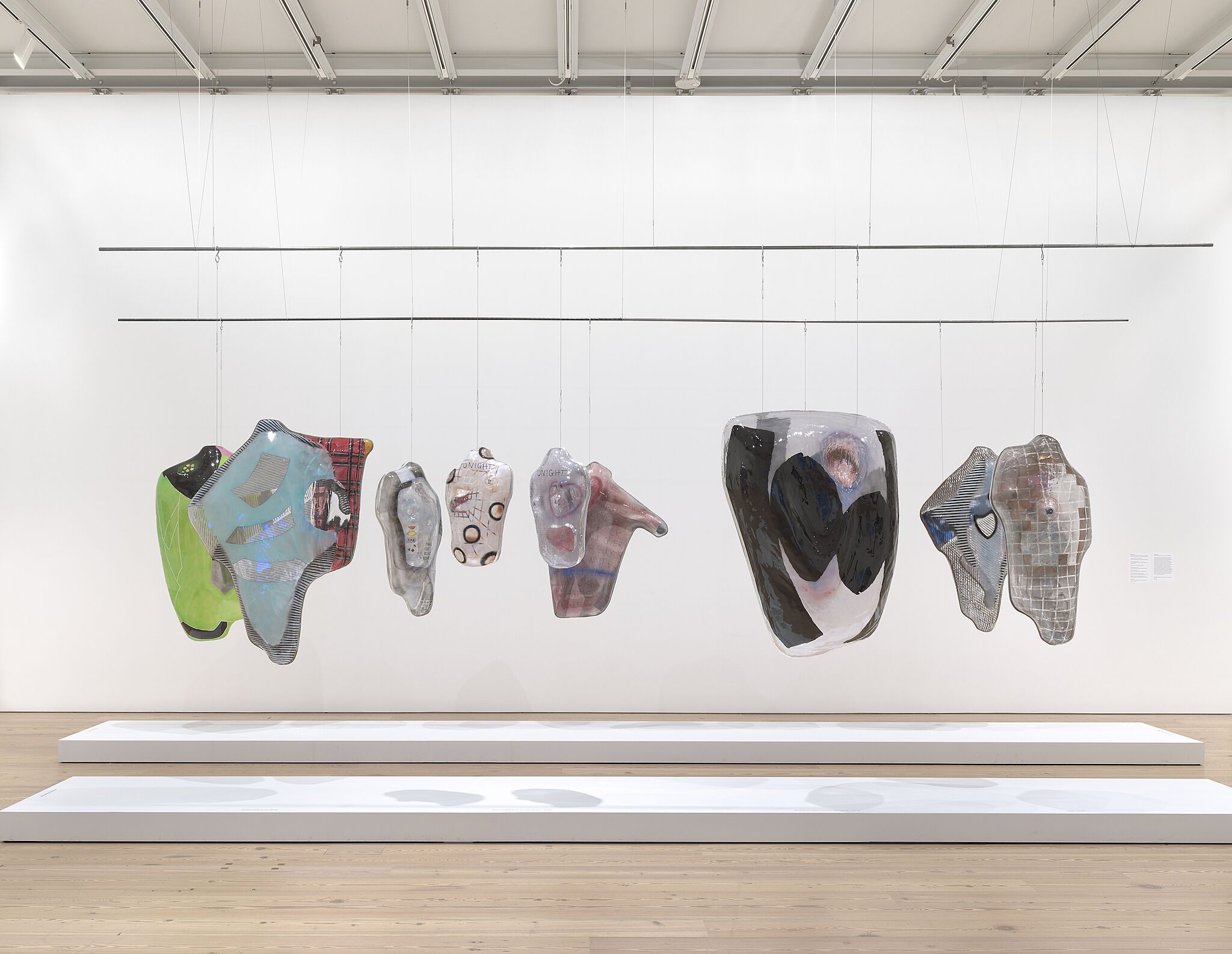Whitney Biennial 2019 | Art & Artists
May 17–Oct 27, 2019
Whitney Biennial 2019 | Art & Artists
Ragen Moss
54
Floor 6
Born 1978 in New York, NY
Lives in Los Angeles, CA
In Ragen Moss’s sculptures, whose floating forms suggest torsos, the artist explores the ideas of space-making and meaning by placing one independent, fully-formed sculpture inside another. Through such layered works, Moss often creates tension between transparency and opacity, illumination and darkness, sculpted mark and painterly gesture, text and form. Moss engages the surfaces of her works through hand carving and the application of patterns, planes of color, and texts drawn from sources such as law (she is also a practicing lawyer) and literature. She has explained that she is interested in “creating sculpture that teaches us about what it means to be a spatialized human” defined equally by rational thought as well as physical volume and mass. To the artist these sculptures are like characters in a film, novel, or our everyday lives—interrelated in ways that reflect our time but remain open to interpretations.
Driver (with Passenger), November 2018; Author (with Arm), 2018; Theoloogian [sic] (with Torso), 2018; Romanettes (with double Hearts), 2018; Miner (with Heart), 2019; Bullfighter (with one other Bullfighter), 2019; Figure (with Arm), 2018; Ogler, 2018
-
0:00
Ragen Moss
0:00
Ragen Moss: This is Ragen Moss, and I am an artist.
The primary thing that I think I'm doing is addressing what it means for sculpture and really for us as people to have an interiority.
When I'm actually making the works, I do this thing where I dedicate myself to completely resolving a sculpture, and then I basically donate that completed sculpture to another sculpture and embed it inside it. I usually signal the layers of the work in the title, so one work that will be in the exhibition is called Driver with Passenger with Heart and that basically is a signal to a viewer that there are three moments of interrelated spatiality in this one sculpture.
One of the gifts that I have by working in a transparent medium is that I get the through look and the inside look. You can literally see through a piece to another piece.
And then in addition on each of those layers there's text.
Here you're reading through this work and through space. And that is also really exciting to me because that's how I experience my world and my brain and the conversations that I have with other people. It's usually not a linear experience, it's through all of these layers of language and form and meaning making.
A lot of times sculpture is not thought of as a medium that lends itself to specific ideas, and I think text helps it do that.

